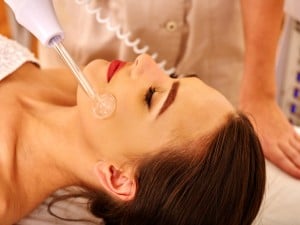Anti-aging care is constantly evolving. In just a few short decades we have seen medical and technological advances that have completely revolutionized both how effective and how safe anti-aging and skincare treatments are. From innovations in laser treatment technologies to huge breakthroughs in sun protection creams, the options you have for keeping your skin looking young and radiant have never been more diverse or more exciting. At the Dermatology Center of Indiana we are always at the forefront of the latest advances in skincare. Below are just five of the biggest breakthroughs we have seen in anti-aging care.
1. Juvederm
 Juvederm, along with other soft tissue fillers, have completely changed the way people think about facial rejuvenation. By volumizing the skin, Juvederm allows you to retain a fresh and youthful appearance without having to go through the cost and occasional risk of actual plastic surgery. Furthermore, the effects of Juvederm tend to be less drastic than plastic surgery, meaning you needn’t worry about your treatment being too noticeable by the outside world.
Juvederm, along with other soft tissue fillers, have completely changed the way people think about facial rejuvenation. By volumizing the skin, Juvederm allows you to retain a fresh and youthful appearance without having to go through the cost and occasional risk of actual plastic surgery. Furthermore, the effects of Juvederm tend to be less drastic than plastic surgery, meaning you needn’t worry about your treatment being too noticeable by the outside world.
2. Sunscreens
Sun protection has always been a key element in keeping skin healthy and youthful. Many of the signs we typically associate with aging, such as age spots, are actually the result of sun exposure. Therefore, any advance in sun protection is an advance for anti-aging care. Specifically, the development of Helioplex and Mexoryl SX help protect the skin from short UVA rays. These new technologies also mean sunscreen needs to be reapplied less frequently to remain effective.
3. BLU-U Treatments
BLU-U treatments are an effective way for treating acne without having to rely on drugs or antibiotics. BLU-U treatments consist of a number of short sessions over several weeks. During these session your affected skin is treated with the BLU-U blue light which targets acne by destroying the P. acnes bacteria. This safe treatment has quickly become one of our most innovative and effective ways of helping people, regardless of their age, beat their acne problems.
4. Coblation Skin Resurfacing
Coblation skin resurfacing makes tackling wrinkles safer and easier than ever before. Instead of using laser technology (which can reach extremely high temperatures), coblation uses radiofrequency energy that rarely exceeds 70 degrees Fahrenheit. Coblation can be used to treat not just wrinkles, but also skin pigmentation and coarse skin. Because this technology works at much lower temperatures than conventional laser treatments, the recovery process for most patients also tends to be faster.
5. Non-ablative Laser Resurfacing
Non-ablative laser resurfacing, unlike traditional ablative laser treatment, does not remove the upper layers of the skin. An exciting new way of treating wrinkles and other skincare issues, non-ablative laser resurfacing helps tighten skin and stimulate rejuvenation. Although the effects of non-ablative treatments are not as drastic as traditional laser treatments, recovery times do tend to be much shorter.
With so many exciting breakthroughs in the world of anti-aging at your fingertips, you are sure to be able to find the treatment that will work best for you. By contacting us at the Dermatology Center of Indiana, we will be able to show you how our own anti-aging specialists can have you looking and feeling younger in no time!
Disclaim: This blog provides general information and discussion about medical, cosmetic, mohs, and surgical dermatology. The words and other content provided in this blog, and in any linked materials, are not intended and should not be construed as medical advice. If the reader or any other person has a medical concern, he or she should consult with an appropriately-licensed dermatologist or other health care worker.